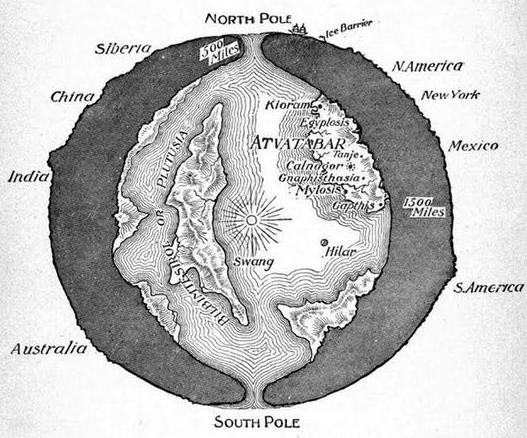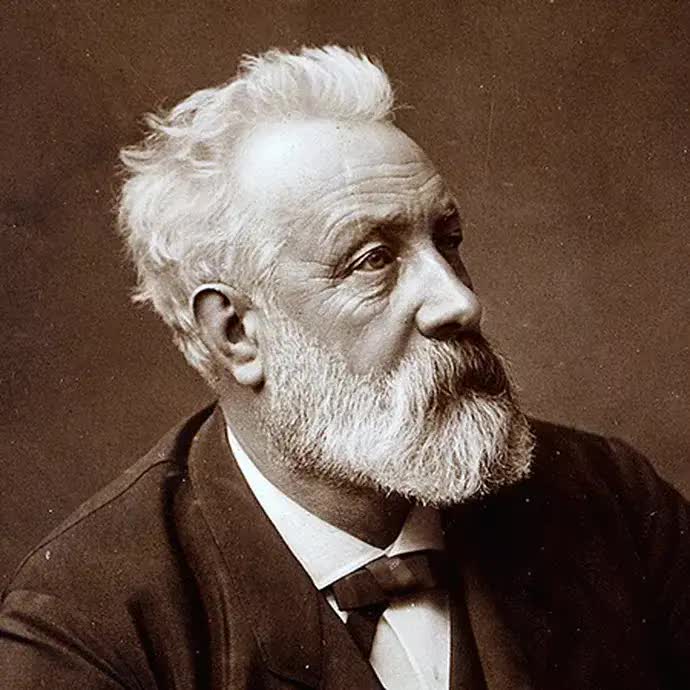Why did people previously think that the Earth was hollow?
Before modern science, reasoning and logic were the best tools to explain or speculate about things about the Earth
Humanity sometimes looks at the world with different eyes based on the knowledge we have. If a child is born without knowledge of the Earth and is taught that our planet is flat, then he or she has no reason to doubt those things. However, our curiosity is what drives humanity towards education from a very young age, not only about human origins but also about the planet on which we live.
Based on historical records from early Earth researchers and explorers, humanity has accumulated knowledge that allows us to know the size, shape, and resources available on our planet. we.
In the past two centuries – the modern era of exploration, not many people have ventured to directly explore the still hidden corners of the blue planet. This is because exploration not only takes a lot of time and resources but is also quite a risky business.
We are exploring Mars while there are still many unexplored places on Earth or places that have been lost over time. We don’t know what lies at the bottom of the ocean, and the deepest hole we’ve dug in the Earth’s crust is only 12.2 km deep. Therefore, there are still many unknowns that humanity has not yet had time to understand.
For many years, people didn’t really wonder much about what’s inside the Earth and this is because they were always faced with bigger problems like war, famine or pandemics. And wonders were reported by early geologists but it never attracted public attention.
It was not until the late 19th century that this wonder was noticed by the public and it not only received the support of the public but even the support of scientists, politicians and leaders. world.
The idea behind the theory is that the Earth is actually hollow inside and that it is surrounded by more land and water than on the surface, with a separate ecosystem maintained by the Sun represented as the Earth’s core. The Earth’s 2,400 km thick crust is what separates what has been described as a separate civilization from us living outside the crust.
Author of the famous novel “Journey to the Center of the Earth” Jules Verne.
The origin of this theory was promoted by the famous novel “Journey to the Center of the Earth” by Jules Verne, published in 1864. Initially the novel was published in French, but it was quickly published in French. translated into different languages and distributed around the world. The book attracted so much attention that in 1867, Jules Verne published another edition expanding on the details of the center of the Earth.
The novel’s story represents an expedition team descending into a crater in Antarctica, towards the center of the Earth. After 2 months, the expedition team finally reached the Earth’s core, where they discovered a completely new civilization powered by a miniature Sun – the Earth’s core. This civilization is as advanced as our world was in the 19th century, with a great emphasis on infrastructure.
This is where the problems began, as the book became more and more popular, some people actually considered this book not as a novel, but as if it actually stated new findings. This also attracted the attention of various scientists who were inspired by the novel to actually believe that this theory could be true.
Many writers began a campaign to mediatize this “new discovery” to the rest of the world, in the same way that social media disinformation today, but at a much slower pace. .
The first evidence of this was published at the end of the 19th century by a researcher in the field of geography. The book titled “Physical Geography” was written by Arnoldo de Azevedo, who wrote about a mysterious world beneath our feet arguing that scientists of the time knew nothing about what lay beneath their feet. five miles.
The author goes on to say that scientists only come up with theories and hypotheses without any hard evidence to determine reliability.
Azevedo also offers his own scientific hypothesis behind this theory. When the Earth was still forming as a planet, most of the Earth was just soft lava and the centrifugal speed at which the planet orbited forced the lava from the center or core of the Earth to settle, due to That makes the Earth hollow. Because the centrifugal force at the Earth’s poles is lower, holes in the hollow center have also formed.
Believe it or not, there is actually a calculation that supports this theory. The total size of our planet’s surface is 431.5 million km squared, which would give it a weight more than six times greater than Earth’s actual weight of 5.972 × 10²⁴ kg. This means that the Earth could be hollow (although it could be a plausible explanation).
What’s even more interesting is that the 19th century was actually not the first time this theory was mentioned as a possible scientific theory. This theory was first mentioned in 1692 by Edmond Halley, a researcher in astrology and mathematics from the University of Oxford, who proposed the idea that the Earth is actually a hollow planet.
If we go even further in history, we find references to similar theories about the Hollow Earth by ancient Greek scholars.
Back in the 19th century, after Azevedo’s work was published, there were a large number of scholars who supported this theory, or variations very similar to it.
In the early 20th century, this theory really received the attention of scholars from many different fields. A team of Russian scientists has discovered that the Magnetic North Pole is not represented by a single point but by a line nearly 1,500 km long that crosses the polar river all the way to the Taimir Peninsula from Siberia.
Even German scientists before World War II had researched this theory but sadly all the research documents were lost or destroyed during the war.
Since the mid-20th century, there have been smaller authors publishing on the theory, but around the 1970s when the scientific revolution took hold, interest in the theory died out.
Related Post
The entire tomb is filled with signs and symbols that mention Queen Nefertiti and after some time passed and linguistic experts managed to decipher the stories told here, the team was baffled.
The mystery of the Solar Temple of Abu Gurab and its “Star Gate” comes to light
Thuya, the mother of Queen Tiye, left a monumental legacy by becoming the grandmother of Akhenaten and Tutankhamun.
The oldest traditions lead us to believe that blacks were the first inhabitants of Mexico.
The REAL face of King Tut: The pharaoh had feminine hips, clubfoot, and protruding teeth according to the ‘virtual autopsy,’ which also revealed that his parents were brother and sister.
The “oldest gold of humanity” was found in the Varna necropolis, on the Bulgarian Black Sea coast





